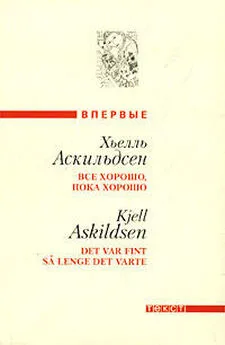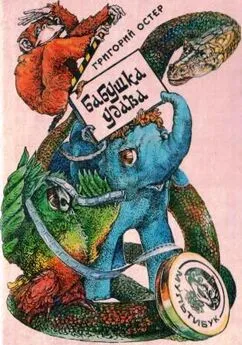Эмили Остер - Всё хорошо!
- Название:Всё хорошо!
- Автор:
- Жанр:
- Издательство:Манн, Иванов и Фербер
- Год:2020
- ISBN:9785001690887
- Рейтинг:
- Избранное:Добавить в избранное
-
Отзывы:
-
Ваша оценка:
Эмили Остер - Всё хорошо! краткое содержание
Всё хорошо! - читать онлайн бесплатно полную версию (весь текст целиком)
Интервал:
Закладка:
15.Wroblewska-Seniuk K. E., Dabrowski P., Szyfter W., Mazela J. Universal newborn hearing screening : Methods and results, obstacles, and benefits // Pediatric Research. 2017. № 81 (3). Р. 415–422.
16.Merten S., Dratva J., Ackermann-Liebrich U. Do baby-friendly hospitals influence breastfeeding duration on a national level? // Pediatrics. 2005. № 116 (5). Р. e702–е770.
17.Jaafar S. H., Ho J. J., Lee K. S. Rooming-in for new mother and infant versus separate care for increasing the duration of breastfeeding // Cochrane database of systematic reviews 2016; (8): CD006641.
18.Lipke B., Gilbert G., Shimer H., et al. Newborn safety bundle to prevent falls and promote safe sleep // MCN : The American Journal of Maternal / Child Nursing. 2018. № 43 (1). Р. 32–37.
19.Thach B. T. Deaths and near deaths of healthy newborn infants while bed sharing on maternity wards // Journal of Perinatology. 2014. № 34 (4). Р. 275–279.
20.Lipke B. et al. Newborn safety bundle to prevent falls.
21.Flaherman V. J., Schaefer E. W., Kuzniewicz M. W., Li S. X., Walsh E. M., Paul I. M. Early weight loss nomograms for exclusively breastfed newborns // Pediatrics. 2015. № 135 (1). Р. e16–е23.
22.Smith H. A., Becker G. E. Early additional food and fluids for healthy breastfed full-term infants // Cochrane database of systematic reviews 2016; (8): CD006462.
23.Committee on Hyperbilirubinemia. Management of hyperbilirubinemia in the newborn infant 35 or more weeks of gestation // Pediatrics. 2004. № 114 (1). Р. 297–316.
24.Chapman J., Marfurt S., Reid J. Effectiveness of delayed cord clamping in reducing postdelivery complications in preterm infants : A systematic review // Journal of Perinatal & Neonatal Nursing. 2016. № 30 (4). Р. 372–378.
25.McDonald S. J., Middleton P., Dowswell T., Morris P. S. Effect of timing of umbilical cord clamping of term infants on maternal and neonatal outcomes // Cochrane database of systematic reviews 2013; (7): CD004074.
26.American Academy of Pediatrics Committee on Fetus and Newborn. Controversies concerning vitamin K and the newborn // Pediatrics. 2003. № 112 (1 Pt 1). Р. 191–192.
27.American Academy of Pediatrics Committee on Fetus and Newborn. Controversies concering vitamin K.
Глава 2. Я должна забрать ребенка домой?..
1.Sun K. K., Choi K. Y., Chow Y. Y. Injury by mittens in neonates : A report of an unusual presentation of this easily overlooked problem and literature review // Pediatric Emergency Care. 2007. № 23 (10). Р. 731–734.
2.Gerard C. M., Harris K. A., Thach B. T. Spontaneous arousals in supine infants while swaddled and unswaddled during rapid eye movement and quiet sleep // Pediatrics. 2002. № 110 (6). Р. e70.
3.Van Sleuwen B. E., Engelberts A. C., Boere-Boonekamp M. M., Kuis W., Schulpen T. W., L’hoir M. P. Swaddling : A systematic review // Pediatrics. 2007. № 120 (4). Р. e1097–е1106.
4.Ohgi S., Akiyama T., Arisawa K., Shigemori K. Randomised controlled trial of swaddling versus massage in the management of excessive crying in infants with cerebral injuries // Archives of Disease in Childhood. 2004. № 89 (3). Р. 212–226.
5.Short M. A., Brooks-Brunn J. A., Reeves D. S., Yeager J., Thorpe J. A. The effects of swaddling versus standard positioning on neuromuscular development in very low birth weight infants // Neonatal Network. 1996. № 15 (4). Р. 25–31.
6.Short M. A. et al. The effects of swaddling versus standard positioning.
7.Reijneveld S. A., Brugman E., Hirasing R. A. Excessive infant crying : The impact of varying definitions // Pediatrics. 2001. № 108 (4). Р. 893–897.
8.Biagioli E., Tarasco V., Lingua C., Moja L., Savino F. Pain-relieving agents for infantile colic // Cochrane database of systematic reviews 2016; (9): CD009999.
9.Sung V., Collett S., De Gooyer T., Hiscock H., Tang M., Wake M. Probiotics to prevent or treat excessive infant crying : Systematic review and meta-analysis // JAMA Pediatrics. 2013. № 167 (12). Р. 1150–1157.
10.Iacovou M., Ralston R. A., Muir J., Walker K. Z., Truby H. Dietary management of infantile colic : A systematic review // Maternal and Child Health Journal. 2012. № 16 (6). Р. 1319–1331.
11.Hill D. J., Hudson I. L., Sheffield L. J., Shelton M. J., Menahem S., Hosking C. S. A low allergen diet is a significant intervention in infantile colic : Results of a community-based study // Journal of Allergy and Clinical Immunology. 1995. № 96 (6 Pt 1). Р. 886–888; Journal of Human Resources 92. Iacovou M. et al. Dietary management of infantile colic.
12.Hill D. J. et al. A low allergen diet is a significant intervention in infantile colic.
13.URL: https://en.wikipedia.org/wiki/Hygiene_hypothesis.
14.Hui C., Neto G., Tsertsvadze A., et al. Diagnosis and management of febrile infants (0–3 months) // Evidence Report / Technology Assessment (Full Rep) 2012; (205): 1–297; Maniaci V., Dauber A., Weiss S., Nylen E., Becker K. L., Bachur R. Procalcitonin in young febrile infants for the detection of serious bacterial infections // Pediatrics. 2008. № 122 (4). Р. 701–710; Kadish H. A., Loveridge B., Tobey J., Bolte R. G., Corneli H. M. Applying outpatient protocols in febrile infants 1–28 days of age : Can the threshold be lowered? // Clinical Pediatrics (Phila). 2000. № 39 (2). Р. 81–88; Baker M. D., Bell L. M. Unpredictability of serious bacterial illness in febrile infants from birth to 1 month of age // Archives of Pediatrics & Adolescent Medicine. 1999. № 153 (5). Р. 508–511; Bachur R. G., Harper M. B. Predictive model for serious bacterial infections among infants younger than 3 months of age // Pediatrics. 2001. № 108 (2). Р. 311–316.
15.Chua K. P., Neuman M. I., McWilliams J. M., Aronson P. L. Association between clinical outcomes and hospital guidelines for cerebrospinal fluid testing in febrile infants aged 29–56 days // The Journal of Pediatrics. 2015. № 167 (6). Р. 1340–1346. e9.
Глава 3. Сетчатое белье и другие странные вещи
1.Frigerio M., Manodoro S., Bernasconi D. P., Verri D., Milani R., Vergani P. Incidence and risk factors of third-and fourth-degree perineal tears in a single Italian scenario // European Journal of Obstetrics & Gynecology and Reproductive Biology. 2017. № 221. Р. 139–143; Bodner-Adler B., Bodner K., Kaider A., et al. Risk factors for third-degree perineal tears in vaginal delivery, with an analysis of episiotomy types // Journal of Reproductive Medicine. 2001. № 46 (8). Р. 752–756; Ramm O., Woo V. G., Hung Y. Y., Chen H. C., Ritterman Weintraub M. L. Risk factors for the development of obstetric anal sphincter injuries in modern obstetric practice // Obstetrics & Gynecology. 2018. № 131 (2). Р. 290–296.
2.Berens P. Overview of the postpartum period : Physiology, complications, and maternal care. UpToDate. URL: https://www.uptodate.com/contents/overview-of-the-postpartum-period-physiology-complications-and-maternal-care.
3.Raul A. Exercise during pregnancy and the postpartum period. UpToDate. URL: https://www.uptodate.com/contents/exercise-during-pregnancy-and-the-postpartum-period.
4.Jawed-Wessel S., Sevick E. The impact of pregnancy and childbirth on sexual behaviors : A systematic review // Journal of Sex Research. 2017. № 54 (4–5). Р. 411–423; Lurie S., Aizenberg M., Sulema V., et al. Sexual function after childbirth by the mode of delivery : A prospective study // Archives of Gynecology and Obstetrics. 2013. № 288 (4). Р. 785–792.
5.Viguera A. Postpartum unipolar major depression : Epidemiology, clinical features, assessment, and diagnosis. UpToDate. URL: https://www.uptodate.com/contents/postpartum-unipolar-major-depression-epidemiology-clinical-features-assessment-and-diagnosis.
6.O’Connor E., Rossom R. C., Henninger M., Groom H. C., Burda B. U. Primary care screening for and treatment of depression in pregnant and postpartum women : Evidence report and systematic review for the US Preventive Services Task Force // JAMA : Journal of the American Medical Association. 2016. № 315 (4). Р. 388–406.
7.Payne J. Postpartum psychosis : Epidemiology, pathogenesis, clinical manifestations, course, assessment, and diagnosis. UpToDate. URL: https://www.uptodate.com/contents/postpartum-psychosis-epidemiology-pathogenesis-clinical-manifestations-course-assessment-and-diagnosis.
Глава 4. Грудное молоко — жидкое золото?
1.La Leche League International. URL: http://www.llli.org/resources. Parents Magazine. URL: https://www.parents.com, https://www.parents.com/baby/breastfeeding/basics/the-benefits-of-breastfeeding.
2.Fomon S. Infant feeding in the 20 thcentury : Formula and beikost // Journal of Nutrition. 2001. № 131 (2). Р. 409S–420S.
3.Angelsen N., Vik T., Jacobsen G., Bakketeig L. Breast feeding and cognitive development at age 1 and 5 years // Archives of Disease in Childhood. 2001. № 85 (3). Р. 183–188.
4.Der G., Batty G. D., Deary I. J. Effect of breast feeding on intelligence in children : Prospective study, sibling pairs analysis, and meta-analysis // BMJ : British Medical Journal. 2006. № 333 (7575). Р. 945.
5.Der G. et al. Effect of breast feeding on intelligence in children.
6.Kramer M. S., Chalmers B., Hodnett E. D., Sevkovskaya Z., Dzikovich I., Shapiro S., Collet J., Vanilovich I., Mezen I., Ducruet T., Shishko G., Zubovich V., Mknuik D., Gluchanina E., Dombrovskiy V., Ustinovitch A., Kot T., Bogdanovich N., Ovchinikova L., Helsing E., for the PROBIT Study Group. Promotion of Breastfeeding Intervention Trial (PROBIT) : A randomized trial in the Republic of Belarus // JAMA : Journal of the American Medical Association. 2001. № 285 (4). Р. 413–420.
7.Kramer M. S. et al. PROBIT.
8.Quigley M., McGuire W. Formula versus donor breast milk for feeding preterm or low birth weight infants // Cochrane database of systematic reviews 2014; (4): CD002971.
9.Bowatte G., Tham R., Allen K., Tan D., Lau M., Dai X., Lodge C. Breastfeeding and childhood acute otitis media : A systematic review and meta-analysis // Acta Paediatrica. 2015. № 104 (467). Р. 85–95.
10.Kørvel-Hanquist A., Koch A., Niclasen J., et al. Risk factors of early otitis media in the Danish National Birth Cohort / Ed. by C. Torrens // PLoS ONE. 2016. Vol. 11 (11). e0166465.
11.Quigley M. A., Carson C., Sacker A., Kelly Y. Exclusive breastfeeding duration and infant infection // European Journal of Clinical Nutrition. 2016. № 70 (12). Р. 1420–1427.
12.Carpenter R., McGarvey C., Mitchell E. A., et al. Bed sharing when parents do not smoke : Is there a risk of SIDS? An individual level analysis of five major case-control studies // BMJ Open. 2013. № 3. e002299.
13.Hauck F. R., Thompson J. M. D., Tanabe K. O., Moon R. Y., Mechtild M. V. Breastfeeding and reduced risk of sudden infant death syndrome : A meta-analysis // Pediatrics. 2011. № 128 (1). Р. 103–110.
Читать дальшеИнтервал:
Закладка:









